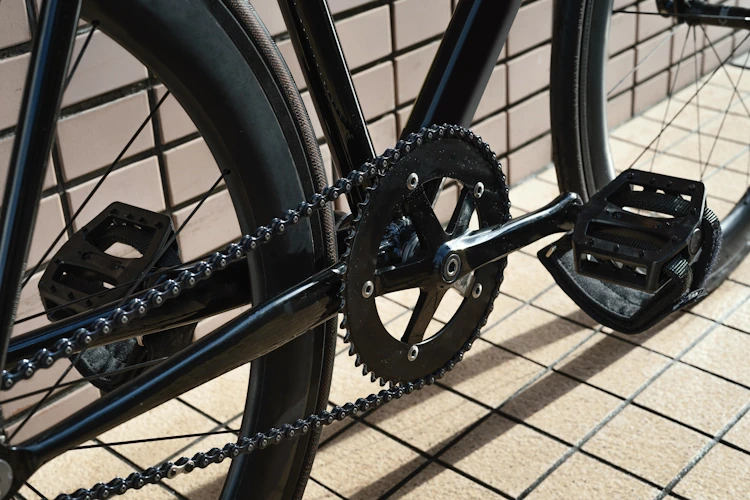Mountain biking enthusiasts understand the critical role that equipment plays in elevating their riding experience. One often-overlooked component that can significantly impact performance is the choice of pedals. In this guide, we will delve into the world of high-performance mtb pedals, exploring their types, benefits, and the process of upgrading.
Definition of MTB Pedals
MTB pedals, or mountain bike pedals, are crucial interfaces between the rider and the bike. They come in various types, each catering to different riding styles and preferences.
Importance of Upgrading
Upgrading your MTB pedals can enhance your overall biking experience, providing better control, stability, and power transfer. It’s a worthy investment for any avid rider looking to take their skills to the next level.
Types of MTB Pedals
A. Platform Pedals
Platform pedals offer a flat surface for your feet, providing a stable base and allowing riders to reposition their feet easily. They are ideal for beginners and those who prefer the flexibility of foot movement.
B. Clipless Pedals
Contrary to the name, clipless pedals require special cycling shoes with cleats that clip into the pedal mechanism. This design offers better power transfer, especially during challenging terrains.
C. Hybrid Pedals
Combining features of both platform and clipless pedals, hybrids provide versatility for riders who want the option of both secured and unsecured foot positioning.

Benefits of High-Performance MTB Pedals
A. Improved Power Transfer
High-performance pedals maximize power transfer from your legs to the bike, resulting in more efficient pedaling and increased speed.
B. Enhanced Control and Stability
The advanced design of these pedals ensures a secure connection between your feet and the bike, enhancing control and stability on rough trails.
C. Increased Efficiency
With reduced flex and improved materials, high-performance pedals contribute to a more efficient pedal stroke, allowing you to cover more ground with less effort.
Factors to Consider When Choosing Pedals
A. Pedal Material
Aluminum, titanium, and composite materials are common choices. Each material has its characteristics, affecting weight, durability, and cost.
B. Cleat System Compatibility
Ensure compatibility between your chosen pedals and cycling shoes. Different cleat systems exist, with some being more suitable for specific riding styles.
C. Weight and Durability
Balancing weight and durability is crucial. Lightweight pedals are advantageous for speed, but durability is equally important for longevity, especially in challenging conditions.
Installation Guide
A. Basic Tools Needed
Gather essential tools such as a pedal wrench, lubricant, and a torque wrench for a smooth installation process.
B. Step-by-Step Installation Process
Follow a detailed guide on installing high-performance pedals, ensuring proper alignment and torque for optimal functionality.
Maintenance Tips
A. Regular Cleaning
Maintain your pedals by regularly cleaning off dirt and debris to prevent premature wear and ensure smooth operation.
B. Lubrication
Apply appropriate lubricants to keep moving parts functioning smoothly and to prevent corrosion.
C. Inspection for Wear and Tear
Regularly inspect your pedals for signs of wear and tear, addressing any issues promptly to avoid performance issues on the trail.
Testimonials
A. User Experiences with High-Performance MTB Pedals
Explore real-life testimonials from riders who upgraded their pedals, sharing insights into the noticeable improvements in their biking experience.
Comparison with Standard Pedals
A. Performance Differences
Highlight the significant performance differences between high-performance and standard pedals, showcasing the advantages of upgrading.
B. Long-Term Investment Benefits
Discuss how investing in high-performance pedals is a long-term commitment, providing enduring benefits in terms of performance and durability.
Overcoming Common Concerns
A. Transitioning to Clipless Pedals
Address common concerns riders may have when transitioning from platform to clipless pedals, providing tips for a smooth adaptation.
B. Adjusting to Different Cleat Systems
Guide riders in adjusting to various cleat systems, emphasizing the importance of finding the right balance between comfort and efficiency.
X. Expert Recommendations
A. Top High-Performance MTB Pedal Brands
Present recommendations from experts in the field, highlighting renowned brands known for their quality and innovation.
B. Considerations for Various Riding Styles
Discuss how the choice of high-performance pedals may vary based on individual riding styles, such as downhill, cross-country, or trail riding.
Environmental Impact
A. Sustainability in Pedal Manufacturing
Explore the efforts of some brands in creating environmentally sustainable pedals, appealing to eco-conscious riders.
FAQs
A. Are high-performance pedals suitable for beginners?
Yes, high-performance pedals can benefit beginners by providing enhanced control and efficiency.
B. How often should I replace my pedal cleats?
Cleats should be replaced every 3,000 to 5,000 miles or earlier if signs of wear are evident.
C. Can I use MTB pedals for road cycling?
While possible, it’s not optimal. MTB pedals are designed for off-road conditions, and road-specific pedals may offer better performance.
D. Do high-performance pedals work well in muddy conditions?
Yes, many high-performance pedals are designed to handle muddy terrains effectively.
E. Are platform pedals better for certain terrains?
Platform pedals are versatile and suitable for various terrains, making them a popular choice for riders exploring different landscapes.